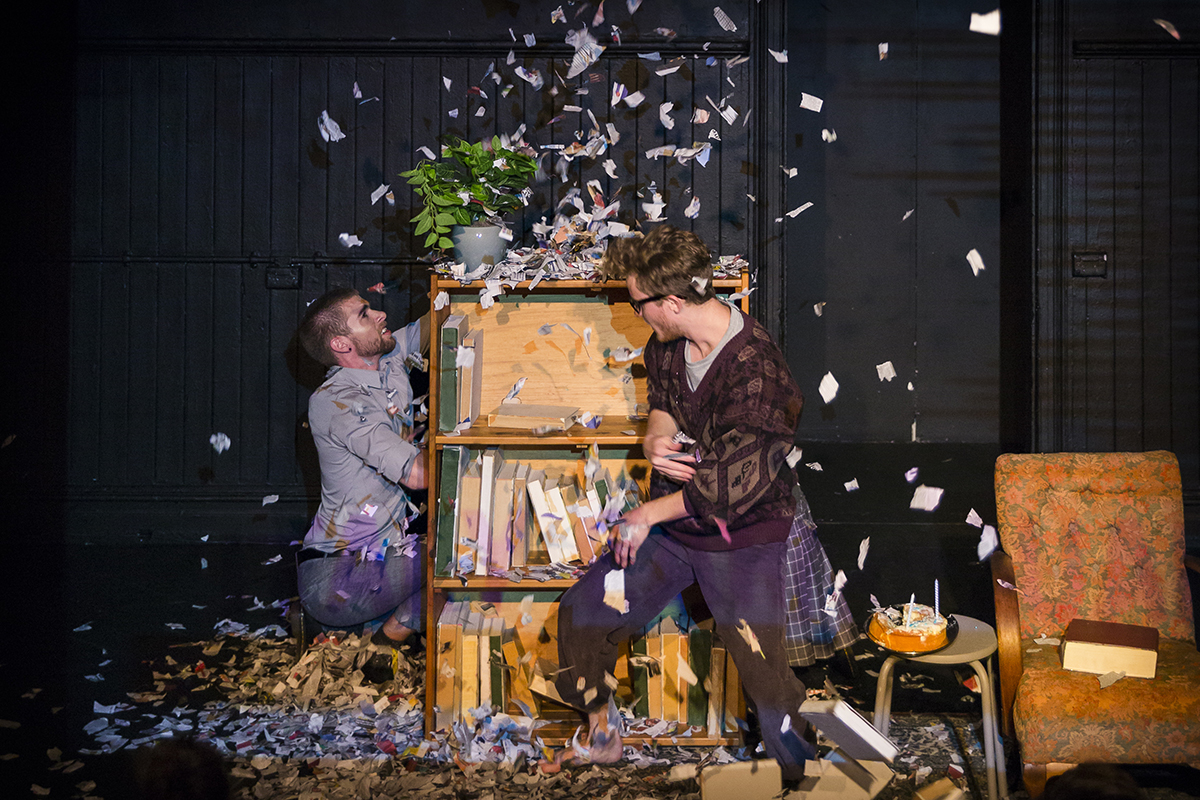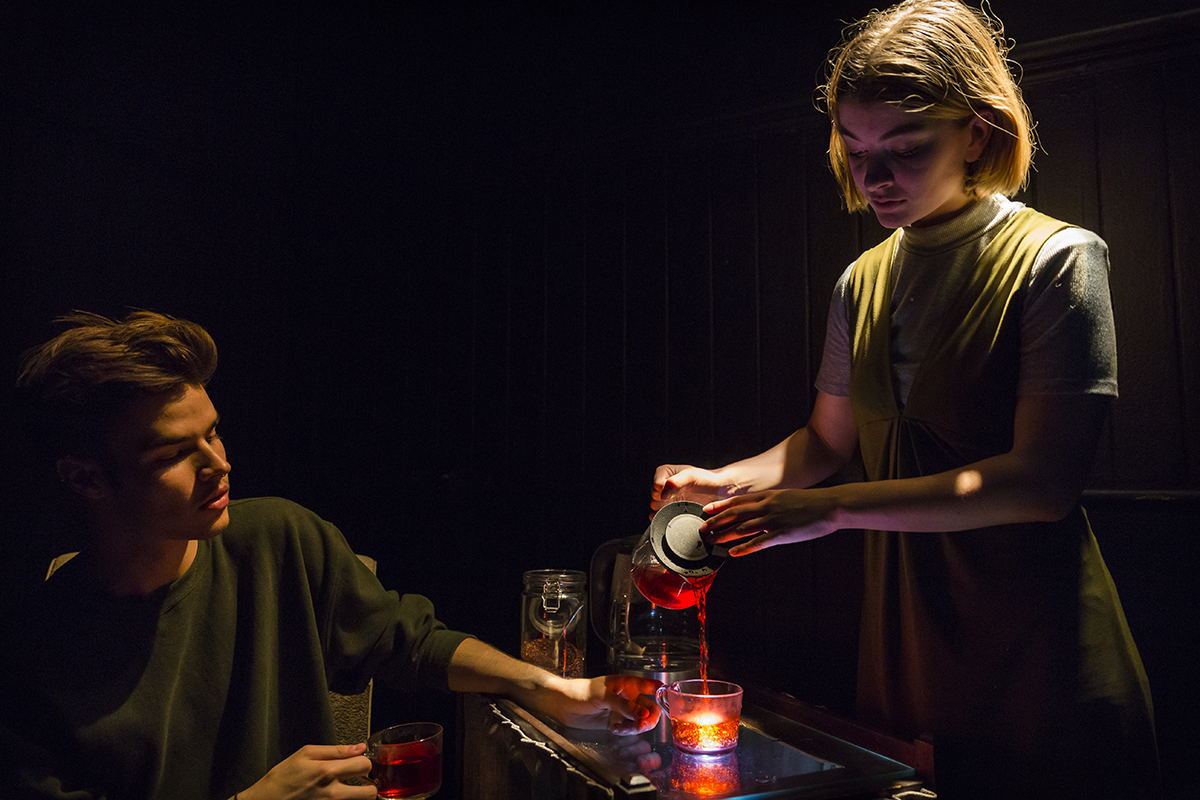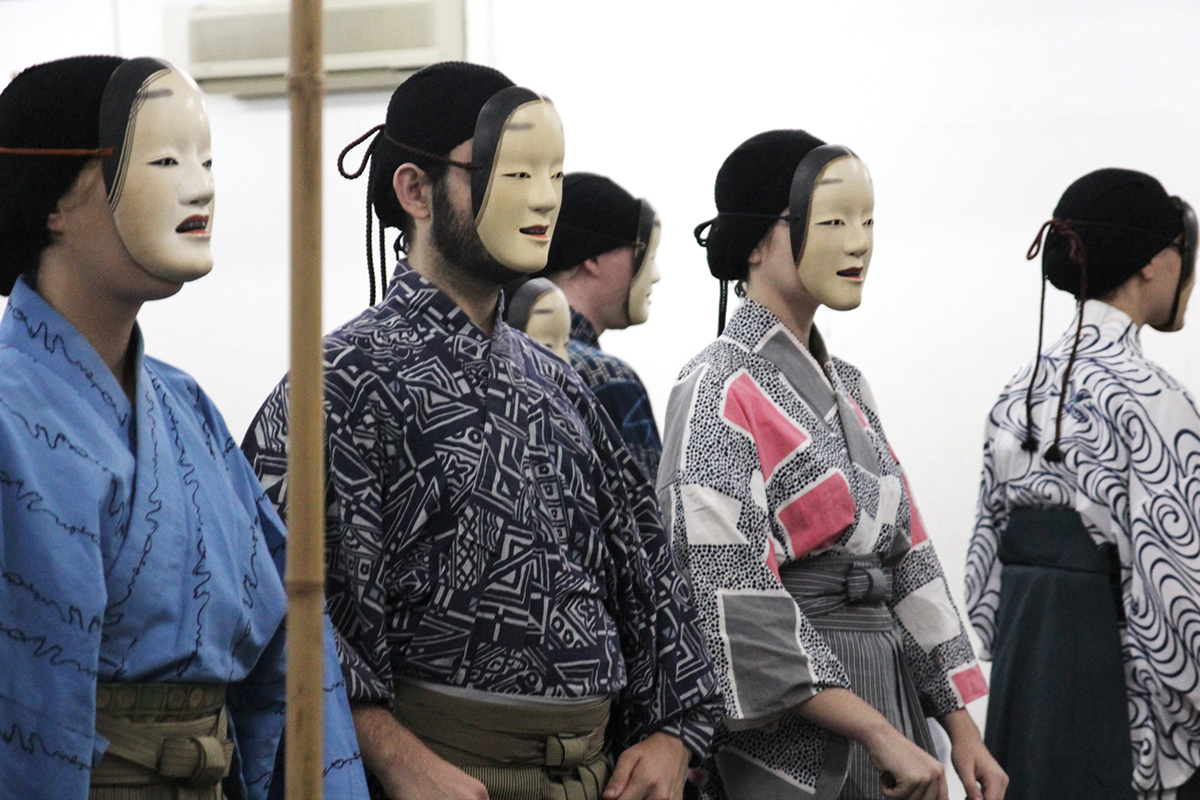
Interview, Frances Barbe: The university as performance incubator
These are challenging times for young graduates emerging as performers from our universities into a highly competitive market. Performing arts departments have become increasingly focused on preparing students with more than skills training, encouraging independence, business alertness and investing in self-devised graduating performances that might well go on to become fully-fledged professional productions shortly after graduation or fuel the creation of new works. This is especially the case for students who take to contemporary performance, physical theatre and live art.
I approached Frances Barbe, Lecturer and Course Coordinator for the Bachelor of Performing Arts degree at the Western Australian Academy of Performing Arts, to talk in particular about the Performance Making course subsequent to our review of Blueprint, a production created by three recent graduates staged at Perth’s The Blue Room Theatre in June. Jessica Russell, Phoebe Sullivan and Sean Crofton made Blueprint as their graduating production in 2016 and had now, as theatre professionals, re-mounted it. I was interested in the continuity between course work and ‘real world’ practice, and interviewed Wallace and Sullivan as well.
Frances Barbe replied to my invitation to talk, writing, “I think there is really interesting potential in courses like ours at WAAPA being incubation chambers for new Australian work. Particularly as artists struggle more and more to get support, the universities can be places that offer it.” Each year original, self-directed third year student works are shown at The Blue Room Theatre and now, Barbe writes, “we have a new partnership with Fremantle Arts Centre, a four-week residency offered to graduates to use in their first crucial year out. We are trying to find ways within the course and beyond it to support artists in ways that are meaningful.” I then spoke by phone with Barbe about the structure of the Performance Making course.
Breeding independence
Students continually develop and expand their skills across the three years, says Barbe, “initially learning how to perform from existing texts and study traditional works and artists. But I’d say over 50% of their work is about creating their own work — having a go at it, finding out how hard it is, failing at it and getting feedback in a relatively safe environment.” Students evolve towards becoming truly independent practitioners. Barbe explains the trajectory. “There’s a real progression. At the end of first year they do a group performance, typically directed or co-directed by staff in which we introduce the devising process. They research a theme, pitch a lot of ideas, observe how we shape those ideas and workshop a scene from a rough improvisation into a more developed scene. But we also at some point say, ‘No more ideas; now we’re going to direct you.’”

Students from WAAPA BPA Performance Making 3rd year end of year production TILT 2017, photo Stephen Heath
Going solo
“In second year, they create a solo and while we scaffold them through that creative process, they really find out if they have enough fire in the belly to create a seven-minute solo — a very much independently driven project. One might make a monologue, another a movement piece. We try not to prescribe style and once we see how a work is developing with one staff member taking them through the process, we might bring in mentors from different areas for a few extra sessions. In order to be non-prescriptive, we have to be very responsive in the Performance Making course.”
Site-specificity
In the second semester of second year the students make site-specific works with a professional guest director. “At this moment, our students are working with Barney O’Hanlon from the SITI Company from New York. They’re at Wireless Hill in Perth, a very important Indigenous site but it’s also linked to Morse Code transmission in World War I and later radio developments. The students are going through that process of listening to a site and creating a response to it.” Created by Anne Bogart, SITI Company combines teaching of the Suzuki Tadashi method which Barbe trained in, and Bogart’s Viewpoints improvisation methodology. “It’s really exciting to see the students doing Viewpoints with someone from the company who developed that for performers.”
Pitch, develop, show
Barbe says the three productions in first and second year “really set the students up for the third, in which is they spend much of it creating their own work, either alone or mostly in small groups. At the beginning of the year they pitch an idea and they’re assessed on it. The pitch can be a talk or performative or the showing of stimulus images. They get feedback from teachers but we also invite industry professionals — Blue Room staff, writers, directors and scenographer Zoe Atkinson. After the pitch there’s a creative development phase, a presentation of a certain percentage of the work and an assessment before going on to production.”
Once the works are finished, they appear at The Blue Room Theatre “where staff and audiences gather around and support the students and let them know how the industry works. It’s a really good way to get students thinking about their working lives after graduation.”
Skilling
I ask Barbe about skills training, having noticed in the course outline mention of directing, puppetry and Butoh. She explains, “acting, voice and movement run through the whole three years. There are units called Movement Fundamentals and Devising Physical Performance. In other semesters they do Directing and Playwriting as well. And I embed a series of master classes alongside the productions. In any one semester where there isn’t a unit on Voice, for example, I focus the master class series on vocal technique. The challenge with performance making is depth alongside diversity.”

Students from WAAPA BPA Performance Making, Noh Theatre Workshop, ITI Singapore, photo courtesy WAAPA
ITI, Singapore
One of the most attractive aspects of the Performance Making course is the opportunity to visit Singapore’s Intercultural Theatre Institute (ITI) and participate in a 10-week intensive exploration of a performance practice. Barbe, a specialist in Butoh, Japanese Theatre and intercultural performance, says it’s a transformative experience for students. “Typically, we go in January. In 2017, we focused on Noh Theatre with a master from the Kanze School in Tokyo. In 2018, it will be Kutiyattam, really beautiful Sanskrit theatre storytelling from Kerala in the south of India. The solo performer principally uses eyes, face, gesture. This stylising of emotion will encourage students to explore how to authentically convey heightened feeling.”
The students don’t become expert in a form that takes some 15 years to learn, but, says Barbe, over an immersive 10 weeks, 2-6pm daily after training all morning in voice and movement, it opens young Australian contemporary performance makers to thinking about presence, space and time and other ways of storytelling.”

Frances Barbe teaching, photo courtesy WAAPA
About Frances Barbe
Having viewed Fine Bone China (2008), a haunting work by Frances Barbe available on YouTube, I asked her about her own practice. She taught at the University of Kent from 2001 to 2010 and various training institutions as well as working as a freelance performer, choreographer and movement director in the UK and beyond, including Australia, where she made her last work, Exquisite (2016), performed at Brisbane’s Metro Arts. Working at WAAPA, she says, “is the first time I’ve really committed to teaching and working with emerging artists full-time.” Now in her 40s, she says she’s no longer impatient about making new work: “I’ll typically have two-week intensive creative developments in between semesters. The upside is having incubation time for your ideas and working with collaborators which I love to do.”
Of former Performance Making students Jessica Russell and Phoebe Sullivan, Barbe says, “They both had real strengths when they came to us but we’ve just seen them grow so much.”
–
Find out more about the Bachelor of Performing Arts in Performance Making at the Western Australian Academy of Performing Arts, Edith Cowan University. Perth.
Top image credit: Students from WAAPA BPA Performance Making 3rd year end of year production TILT 2017, photo Stephen Heath






